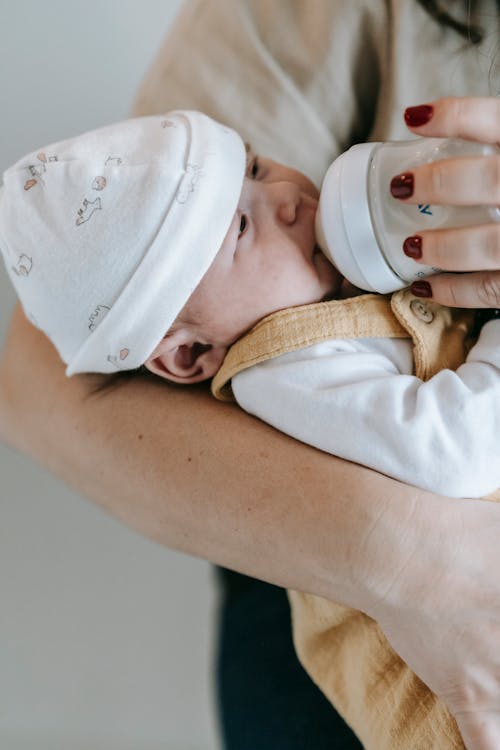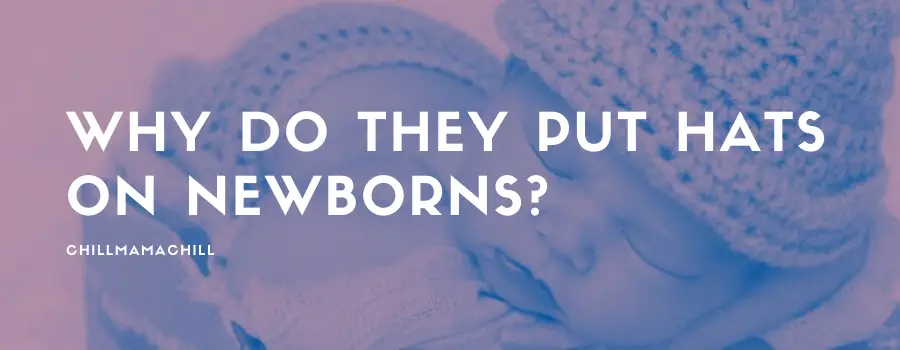Immediately your baby is born you may have barely caught a glimpse of their head before it was covered in a warm, wooly hat. You’ve later found out that it’s protocol in many hospitals to cover up newborns this way, after swaddling with the ubiquitous receiving blanket. But why do they put hats on newborns?
During birth, whether via natural or surgically assisted means, babies transition rather quickly from your warm womb to this cold hard world. As such, their delicate system loses warmth every second their head is exposed. That’s particularly true since their heads are proportionately larger than the rest of their body, compared to adults.
To better manage your newborn baby’s core temperature, continue putting a hat on their head. Whenever you’re stepping outdoors or even indoors when the weather is downcast or hot, keep a couple of hats handy. Keep reading to find out when and how hatting your child will ensure their health and wellbeing.
Does A Newborn Baby Lose More Body Heat Through Their Head?
After being discharged from the hospital, you’ll receive clear instructions on the protection of your temperature-sensitive baby. On both ends of the spectrum, you have learned that your tit is prone to the impact of high or low temperatures. You’ll take particular care during and after baths, essentially drying them quickly and covering their head.

On delivery, your baby is wrapped in swaddling or receiving blanket. And then a hat is put on their head. That’s because newborn heads are larger than the body, a way in which body heat can be lost. It works both ways, as if the room temperature is above 99.6 ° Fahrenheit during birth, hats work to prevent overheating.
It’s not uncommon for babies to report to the emergency room with a supposed fever. It’s only after the attending nurse or pediatrician tests them and they discover the tot was bundled up too much. If your baby seems to be running a temperature, is more irritable than usual, and feels hot, you may have overdressed them.
Knowing at what temperature to put a hat or an extra layer of clothing on your tot can be a guessing game. However, it’s advisable to contact a doctor if you think your child is overheating for no other apparent reason.
Since not much research is available on that question, the best advice I’ve heard goes like this. If you think you need long sleeves because of the weather outside, then give your baby what you have and add another layer. For instance, you can dress them in long-sleeved onesies plus a jacket and a hat.
Why Do They Put Hats on Newborn in the Hospital?
Immediately they’re born, your baby’s head is covered. That is meant to reduce heat loss through the surface of the body. A study was performed using heated mannequins where researchers compared one with a hat and another without. Those wearing hats experienced 18.9% less heat loss on average than those with bare heads.
During the first few hours after birth, your maternity nurse or midwife will monitor your baby’s temperature to ensure they’re self-regulating. To better do this, they have to keep a newborn warm, using a diaper, undershirt, a receiving blanket, and a hat. Another swaddle covers the baby’s bassinet, and readings are taken every half hour.

For at least two hours, your newborn will remain under surveillance until it can maintain a minimum body temperature. If your baby still can’t self-regulate, they’re placed in a warmer. Babies that require special attention from there on are given a red hat. That means they’ll be under observation more frequently than others.
Tests are done on a non-self-regulating baby for problems with respiration, jaundice, or blood sugar. They may require antibiotics, and be placed in high-risk categories. Another hat is colored amber. That means regular observation with temperature, heart rate, and breathing monitoring. Green hats mean that your baby is warm, feeding well, and generally okay.
Can I Shape My Baby’s Head with a Hat?
The head of your newborn makes up 21% of their total body surface area. Your baby also has a lower percentage of body fat, meaning that heat loss can occur more easily through bare skin.
Due to the larger ratio of body to head, your newborn must have a hat. But you should avoid putting on hats on your baby at night since that can cause sudden infant death syndrome of SIDS. Your child can quickly overheat when they’re wearing a beanie in their crib, or they could choke and suffocate.
You can’t reshape your baby’s head using a regular hat, but it’s possible using a molded helmet. That’s providing you’ve got a green light from your pediatrician. You can use this prosthetic on a misshapen skull between four and 12 months when it’s malleable as the brain rapidly grows.
It’s advisable to place your baby in a better sleeping position, which helps shape their head more naturally. You can also alter the feeding position, encouraging the flatter parts of their skull to reshape. By the third month after birth, you can start counter-positioning while monitoring size and shape growth patterns using a pediatrics chart.
The best way to warm your baby is by cuddling them close to your warm body. It’s exactly what nature meant it for. That regulates the baby’s temperature, heartbeat, and blood sugar levels. Skin-to-skin contact with your tot is magical, something hospitals are encouraging for both full-term and preemie babies.
Conclusion
Depending on the thickness of the hat, your baby can wear one while indoors. Knitted varieties, which are thicker than cotton flannel ones, are better suited for outdoor forays or during cold days. Your child’s body temperature, when taken from the rectum should stay between 97.9° and 99° Fahrenheit.
Stellar indoor temperature to put your baby should range from 65° to 74° Fahrenheit. If their body and room have optimum temperatures, there’s no need for a hat. Avoid putting your child to sleep with a beanie on, as that promotes SIDS. If your baby is heating up from all the layers, the first place you should relieve is the head.

I’m Cathrine and I’m a 39-year-old mother of 3 from Utica, New York. And I’m extremely happy you’ve come to visit my hide-out on the web. Here I post about everything related to family-life and usually it will involve babies and lessons I’ve learned over the years from experts, friends, and my own mistakes. So hopefully you will find what i write fun and informational!

